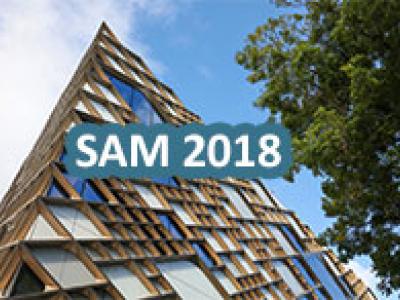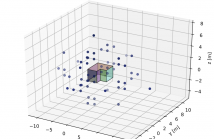
- Read more about Guided-spatio-temporal filtering for extracting sound from optically measured images containing occluding objects
- Log in to post comments
Recent development of optical interferometry enables us to measure sound without placing any device inside the sound field. In particular, parallel phase-shifting interferometry (PPSI) has realized advanced measurement of refractive index of air. Its novel application investigated very recently is simultaneous visualization of flow and sound, which had been difficult until PPSI enabled high-speed and accurate measurement several years ago. However, for understanding aerodynamic sound, separation of air flow and sound is necessary since they are mixed up in the observed video.
- Categories:
 15 Views
15 Views

- Read more about Robust gridless sound field decomposition based on structured eciprocity gap functional in spherical harmonic domain
- Log in to post comments
A sound field reconstruction method for a region including sources is proposed. Under the assumption of spatial sparsity of the sources,this reconstruction problem has been solved by using sparse decomposition algorithms with the discretization of the target region. Since this discretization leads to the off-grid problem, we previously proposed a gridless sound field decomposition method based on the reciprocity gap functional in the spherical harmonic domain.
- Categories:
 27 Views
27 Views
- Read more about Global and Local Mode-domain Adaptive Algorithms for Spatial Active Noise Control Using Higher-order Sources
- Log in to post comments
The aim of spatial active noise control (ANC) is to attenuate noise over a certain space. Although a large-scale system is required to
achieve spatial ANC, mode-domain signal processing makes it possible to reduce the computational cost and improve the performance.
A higher-order source (HOS) has an advantage in sound field control due to its controllable directivity patterns. An array of HOS
can suppress an undesired exterior sound propagation while occupying a smaller physical space than a conventional omnidirectional
- Categories:
 60 Views
60 Views
- Read more about AN ONLINE MULTIPLE-SPEAKER DOA TRACKING USING THE CAPPE-MOULINES RECURSIVE EXPECTATION-MAXIMIZATION ALGORITHM
- Log in to post comments
- Categories:
 22 Views
22 Views
- Read more about Robust Source Counting and Acoustic DOA Estimation using Density-based Clustering
- Log in to post comments
DBSCAN.pdf
- Categories:
 34 Views
34 Views
- Read more about Gridless sound field decomposition based on reciprocity gap functional in spherical harmonic domain
- Log in to post comments
A gridless sound field decomposition method based on the reciprocity gap functional (RGF) is proposed. An intuitive and powerful way of reconstructing a sound field inside a region including sound sources is to decompose the sound field into Green's functions. Current methods based on sparse representation require discretization of the reconstruction region into grid points to construct the dictionary matrix; however, this procedure causes an off-grid problem and has a high computational cost.
- Categories:
 36 Views
36 Views
- Read more about Rate-Distributed Binaural LCMV Beamforming for Assistive Hearing in Wireless Acoustic Sensor Networks
- Log in to post comments
In this paper, we propose a rate-distributed linearly constrained minimum variance (LCMV) beamformer for joint noise reduction and spatial cue preservation for assistive hearing in wireless acoustic sensor networks (WASNs). The WASN can consist of wireless communicating hearing aids, extended with additional wireless microphones. Due to the fact that each sensor node has a limited power budget, it is essential to consider the energy usage when designing algorithms for such WASNs.
- Categories:
 103 Views
103 Views
- Categories:
 14 Views
14 Views
- Read more about Pyroomacoustics: A Python package for audio room simulation and array processing algorithms
- Log in to post comments
We present pyroomacoustics, a software package aimed at the rapid development and testing of audio array processing algorithms.
poster.pdf
- Categories:
 184 Views
184 Views